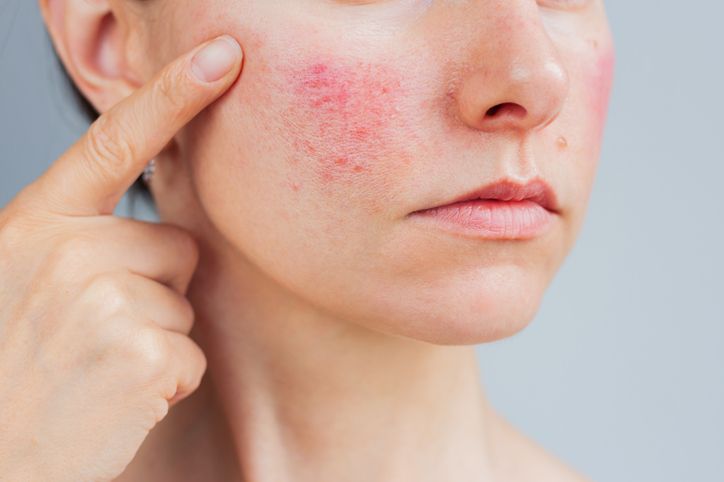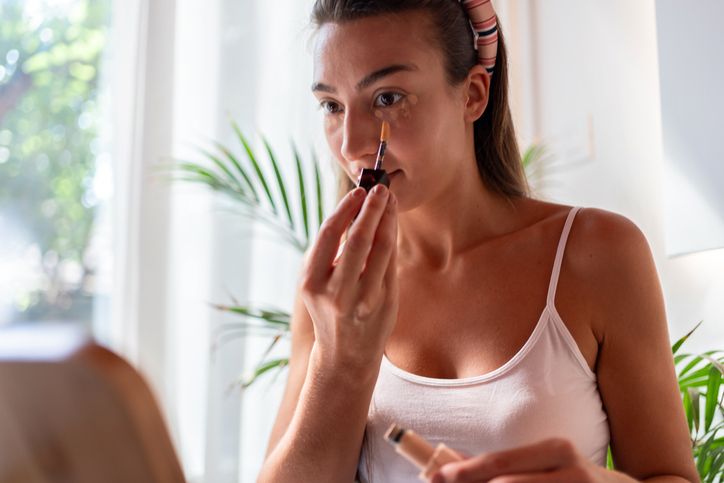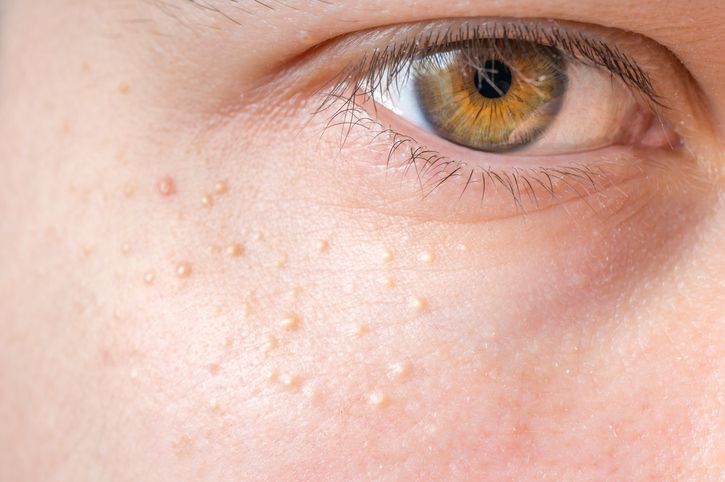- Home
- Trend
- Weight Loss Strategies
- Acne Tips
- Hair Health Information
- Blemish Removal Tips
- Acne Scar Removal Tips
- Muscle Building Techniques
- Intimate Care Tips
- Postpartum Intimate Care
- Eye Bags Wiki
- Tips for Face Slimming
- Secret of Permanent Hair Removal
- Breast Enlargement Tips
- Cure to Snoring
- Marionette Lines
- Skin-Tightening Secrets
Do you have a receding hairline problem? Women can also experience a high hairline. With various signs of hair loss appearing, it may cause thinning hair, an M-shaped forehead, or hair loss at the temples, which can even lead to baldness!
What is Hairline Recession? Does it Mean a High Hairline?
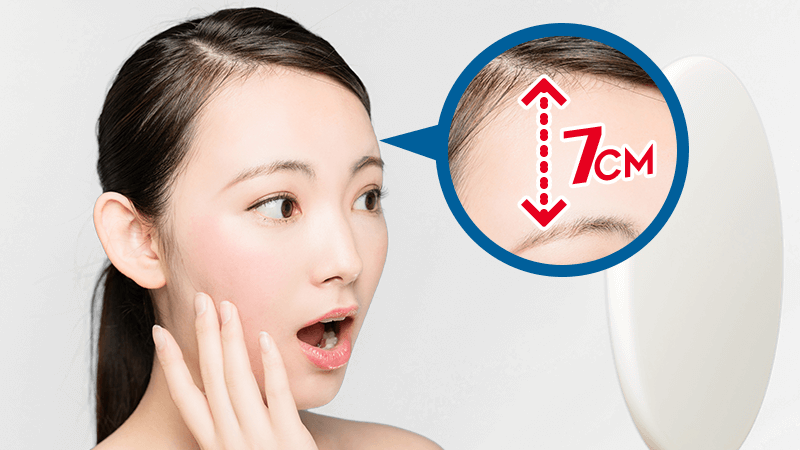
Many people think that a high hairline or high temples means a receding hairline. Several celebrities with naturally high hairlines and wider foreheads are often mistakenly assumed to have hair loss issues, resulting in an uncomfortable situation.
In fact, a high hairline does not equate to a receding hairline. A high hairline is mainly caused by a broader forehead. Generally, if the distance between the eyebrows and hairline is 6 to 7 cm, it's considered a high hairline, which can create the illusion of a receding hairline.
To determine whether you have a receding hairline, it's important to pay attention to changes in your hairline. If you notice your hairline moving up or back, or if you observe thinning at the temples or hair becoming finer, you may be experiencing a receding hairline. Early intervention is crucial.
Signs of Hairline Recession
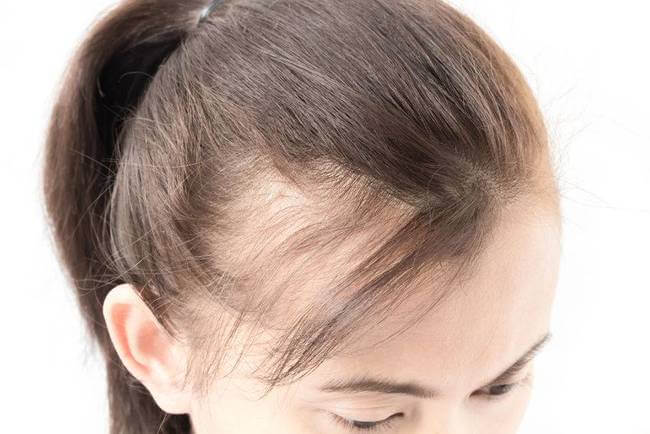
With regular observation, detecting a receding hairline is easy. It often comes with other common hair loss symptoms. If you notice any of the following signs, it's best to check your hairline immediately:
Sign 1: A Broader Forehead
A significant sign of a receding hairline is an increasing width of the forehead. As hair at the hairline thins, it can make the forehead appear larger. If you find that the distance between your eyebrows and hairline is widening, your forehead may look bigger, which could indicate a receding hairline.
Sign 2: Increased Hair Loss
Since a receding hairline is a form of hair loss, an increase in hair shedding should be monitored. The hairline is a common starting point for hair loss, as hair follicles in this area often carry the genetic predisposition to lose hair. Once hair loss occurs, it usually affects the follicles around the hairline first.
Sign 3: Hair Loss at the Temples
Hair loss at the temples is a precursor to the M-shaped forehead. Many men experience hairline recession at the temples before it develops into an M-shaped forehead. Hair loss genes, often influenced by male hormones, can attack the hair follicles at the temples, causing them to shrink and loosen their grip on the hair, leading to hair loss.
Sign 4: Fragile Hair
Various signs of hair loss can damage hair quality. If you notice your hair breaking easily, this could be a sign of a receding hairline. The health of hair follicles and the scalp is crucial for healthy hair growth. When follicles are damaged and the scalp becomes weak, hair fails to absorb enough nutrients, causing it to weaken, break, or become dry and brittle.
免費體驗
F8 Hair Regrowth Treatment
1 Minute Self-Registration
Date should not be before minimal date
Self-Test for Hairline Recession! Find Out in 1 Minute If You Have Hair Loss!
To check if you have a receding hairline, in addition to observing your hairline regularly, you can perform a "self-test." Early detection can help maintain your hair health. Here are two effective self-tests for hairline recession:
• Test 1: Place your index, middle, and ring fingers together and place them between your eyebrows and hairline. If you can comfortably place all three fingers, or if there's extra space, it means your hairline is relatively forward and appears denser. If you can fit four fingers or more, your hairline is more backward. While it might be naturally higher, it’s still important to monitor any backward movement.
• Test 2: While combing or washing your hair, observe how much hair you lose. Losing around 50 to 100 strands daily is normal, but if you notice significantly more hair loss or large amounts of hair falling out when combing or washing, it's time to pay closer attention and take early action.
What Are the Effects of Hairline Recession?
Imagine if your hairline recession worsens over time. What changes would you see?
Typically, a receding hairline starts at the temples. Both men and women can experience male-pattern baldness, a type of hair loss caused by high levels of male hormones attacking the hair follicles at the temples and crown of the head. If hair loss continues to spread from the temples, it may form an M-shaped forehead.
In severe cases, the hairline may retreat to near the top of the head, resulting in a balding appearance. While female baldness is less common than male, thinning hair at the crown can still cause the hairline to appear as though it is receding, giving the appearance of baldness.
Many women don't notice the early signs of an M-shaped forehead due to their hairstyles. However, no one wants their hairline to recede to the point of looking like someone from the Qing Dynasty. Regularly monitor your hairline to ensure you can take action early.
What Causes Hairline Recession? Does Styling It All Back Matter?
There are various reasons behind hairline recession. Some everyday habits, which might seem insignificant, can actually lead to this issue. Recognizing these factors allows you to avoid them and reduce the chances of hairline recession.
Cause 1: Frequent Styling
Many women style their hair frequently, but this can contribute to a receding hairline. Perms, hair dyeing, and tight hairstyles weaken the hair follicles, increasing the lielihood of hair loss. Tight ponytails or buns can also strain the scalp, making hair more fragile. Even while styling, avoid pulling the hair too tight to prevent excessive tension on the scalp.
Cause 2: Irregular Rest
Lack of sleep can contribute to hairline recession. Rest is essential for healthy hair. When the body doesn’t get enough rest, metabolism slows down, causing hair growth to lag behind hair loss. Moreover, sleep is when hair grows most efficiently, and insufficient rest reduces growth hormones, making it harder for hair to recover from damage.
Cause 3: Nutrient Deficiency
Many women who diet or restrict food intake experience hair loss or hairline recession. Poor diets deprive the body of nutrients essential for hair growth, such as protein, iron, zinc, and vitamin E. Lack of these nutrients can make hair dull, brittle, and prone to breakage, so it's essential to maintain a balanced diet to keep hair healthy.
Cause 4: Emotional Stress
Emotional stress also plays a role in hair loss. Many women balance work and family, which can cause mounting stress. Chronic stress leads to tightness in the scalp muscles, which can hinder blood circulation and stop hair follicles from growing. As a result, hair becomes thinner and more prone to falling out.
Cause 5: Incorrect Washing Technique
Washing hair incorrectly can also contribute to hairline recession. Using unsuitable shampoos or damaging the scalp by scratching with fingernails can cause irritation and even hair loss. Always use gentle techniques when washing your hair to avoid scalp damage.
免費體驗
F8 Hair Regrowth Treatment
1 Minute Self-Registration
Date should not be before minimal date
Recommended Hairstyles for a Receding Hairline
If you discover that you have a receding hairline, although it can't be fixed instantly, you can hide it by changing your hairstyle. This can make your hair appear fuller and conceal any thinning areas. Here are three hairstyles to help improve the appearance of a receding hairline:
Hairstyle 1: Bangs
One way to visually address a receding hairline is by using bangs. A full, thick fringe can effectively cover a receding hairline and make the issue less noticeable. When choosing bangs, opt for a thicker style rather than a light, airy one, as traditional bangs better conceal a receding hairline.
Hairstyle 2: Side Part
Switching from a middle part to a side part can shift the focus away from your hairline. A side part will help cover thinning hair at the temples and can create the illusion of a lower hairline, which visually reduces the appearance of a broad forehead.
Hairstyle 3: Hair Accessories
If you prefer not to change your hairstyle, you can try using hair accessories such as headbands or hair clips. These accessories can visually shift the focus of your hairline forward, hiding any receding hair. Alternatively, wearing hats can completely conceal your hairline, providing a simple solution.
How to Improve a Receding Hairline?
Improving hair loss issues is certainly not easy, but it’s not a "dead end" either. With early detection of a receding hairline and appropriate treatment, along with improvements in hair care habits, it is possible to slow down or even improve the condition.
Improving a Receding Hairline:
1. Give Your Scalp Adequate Rest
Having a great hairstyle can undoubtedly enhance your appearance, but it’s important to let your scalp rest periodically to improve a receding hairline. Reducing the frequency of perms and hair dyeing will allow your hair more time to rest, while also reducing the chances of dye coming into contact with your scalp and causing damage. Additionally, women should avoid constantly wearing the same hairstyle or frequently tying all their hair back. It’s best to switch up hairstyles regularly to reduce the tension on your scalp and give your hair the rest it needs.
2. Supplement Hair Growth Nutrients
Since nutrient deficiencies can lead to a receding hairline, it's crucial to focus on consuming nutrients that promote hair growth. Protein, iron, and zinc play important roles in maintaining healthy hair. Incorporating foods rich in these nutrients—like salmon, avocado, red meat, eggs, walnuts, beans, and seafood—into your diet can help promote hair growth, strengthen hair, and balance oil production on your scalp.
3. Choose the Right Hair Care Products
Improving your choice of shampoo and conditioner can have a significant impact on slowing down a receding hairline. One of the causes of hair loss is the clogging of hair follicles with excess oil, preventing nutrients from reaching the hair, causing follicles to shrink and hair to fall out. If you use the wrong hair products, it can lead to an overproduction of oil, further clogging your scalp’s pores.
To maintain healthy hair and improve a receding hairline, choose products that are suitable for your hair type. For oily hair, avoid shampoos with added oils or silicones, as they can increase oil production and leave hair greasy. For dry hair, opt for moisturizing products and, if necessary, use hair oils or masks to enhance repair and nourishment.
4. Scalp Massage
It’s well known that massages improve blood circulation, and this applies to your scalp as well. Regular scalp massage can help improve a receding hairline. Some cases of hair loss are due to poor circulation in the scalp, which deprives hair follicles of essential nutrients. Massaging the scalp increases blood flow, stimulates the follicles, and helps restore scalp health. Additionally, massaging specific pressure points like the Baihui point at the top of the head, the Taiyang point beside the eyes, and the Fengchi point at the back of the neck can further improve circulation and promote hair growth.
5. Hair Growth Treatments
Another way to improve a receding hairline is by undergoing effective hair growth treatments. There are many hair restoration centers available, but how can you choose the one that’s right for you?
When selecting a hair growth treatment to improve a receding hairline, the most important factors to consider are effectiveness and safety. In terms of effectiveness, the treatment should be able to penetrate the hair follicles and reactivate their health to stimulate new growth. Some people opt for hair transplants to fix their hairline, but this procedure carries certain risks and depends heavily on the surgeon's skill. If a hair transplant fails, it may result in an unnatural appearance. For safety, it’s best to choose a non-invasive treatment that won’t harm your scalp, minimizing recovery time and avoiding disruptions to your daily life.
The Perfect Medical F8 Hair Regrowth Treatment uses low-energy laser technology to activate the hair follicles, stimulate capillary growth, and absorb nutrients from the scalp to promote stronger, denser hair. Additionally, the F8 treatment restores scalp health, reduces excess oil production, and keeps the scalp dry. As a non-invasive treatment, it allows you to resume normal activities immediately after the session, making it ideal for those with busy schedules.
Currently, Perfect Medical is offering a limited-time free trial of the F8 Hair Regrowth Treatment. Simply register to schedule a free consultation and scalp analysis!
Schedule Now: Perfect Medical F8 Hair Regrowth Treatment免費體驗
F8 Hair Regrowth Treatment
1 Minute Self-Registration
Date should not be before minimal date
FAQ

Does a receding hairline only occur in men?
A receding hairline is not exclusive to men—women can also experience the issue of hairlines moving upward. Typically, a receding hairline starts with hair loss at the temples, which is related to male-pattern baldness. Both men and women can suffer from male-pattern baldness, which is caused by high levels of male hormones that attack the hair follicles at the temples and crown of the head, making them weak. Male hormones target these areas, leading to hair loss at the temples. If the temples continue to recede while the hairline remains unchanged, it can eventually form an M-shaped forehead. Other factors, such as nutrient deficiencies, frequent hair dyeing, and poor sleep, can also weaken scalp health, causing the hair follicles to shrink and leading to a receding hairline.
How can I tell if I have a receding hairline or just a high hairline?
Many people mistake a high hairline or prominent temples as a receding hairline, but a high hairline doesn’t necessarily mean the hairline is receding. A high hairline is typically caused by a broad forehead. Generally, if the distance between the eyebrows and the hairline is around 6 to 7 cm, it's considered a high hairline, which can create the illusion of a receding hairline. To determine if you have a receding hairline, pay attention to changes in the hairline. If you notice that your hairline has moved higher or back, or if your temples are thinning or becoming finer, you may be experiencing a receding hairline. Early treatment is recommended.
What hairstyles are suitable for women with a receding hairline?
Women with a receding hairline can consider hairstyles with bangs to conceal the issue. Thick bangs work better than lighter, airier styles, as they are more effective at covering the hairline. Additionally, switching from a middle part to a side part can help cover thinning areas at the temples and create the illusion of a lower hairline. Using hair accessories like headbands can also help shift the focus forward, making the receding hairline less noticeable.
What foods can help improve a receding hairline?
A balanced diet with nutrients that promote hair growth can help maintain hair health and reduce hair loss. Protein, iron, and zinc are essential for healthy hair, so it's important to consume foods rich in these nutrients, such as salmon, avocado, red meat, eggs, walnuts, beans, and seafood. These foods help strengthen hair, promote growth, and balance oil production on the scalp.







